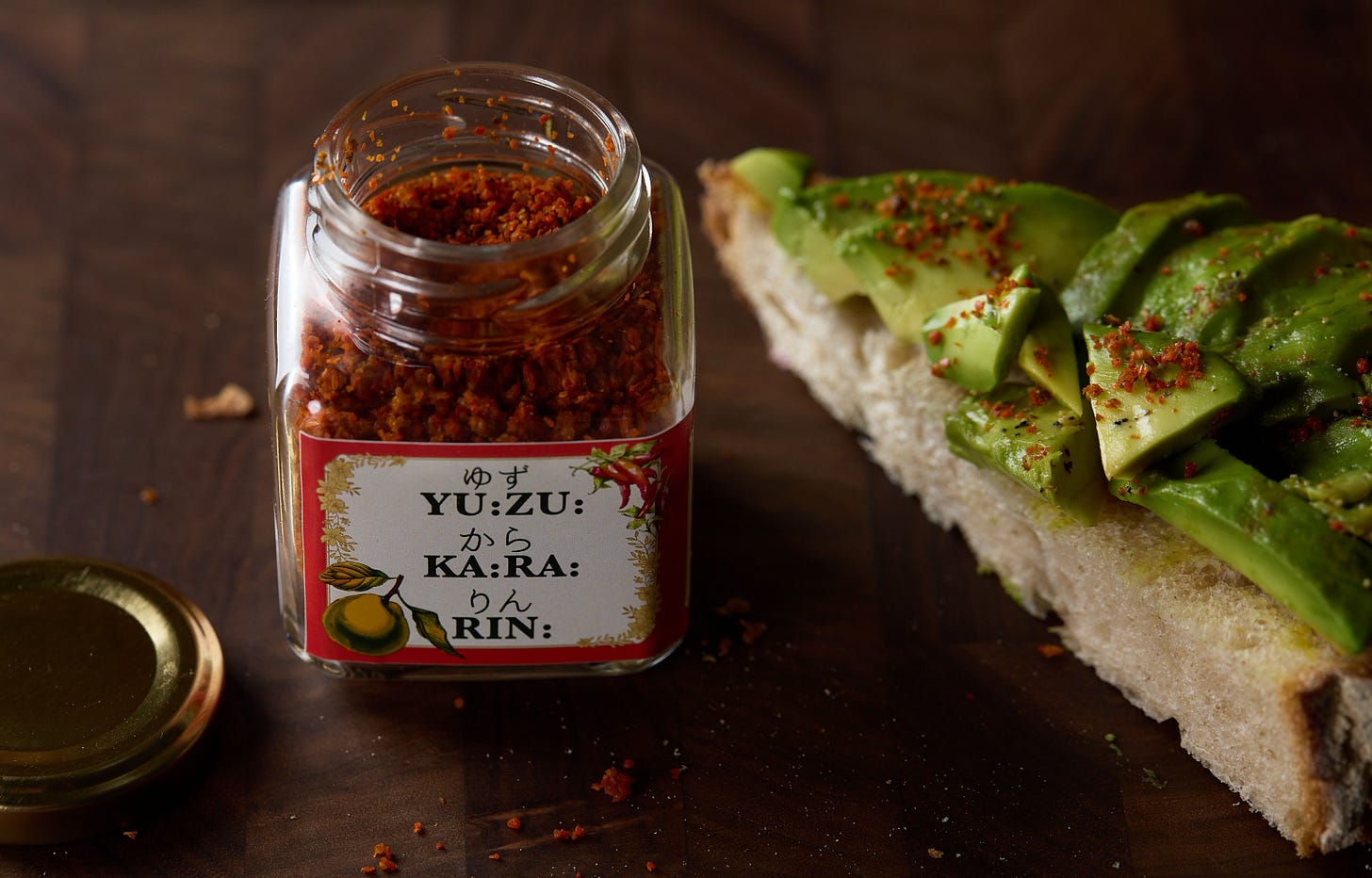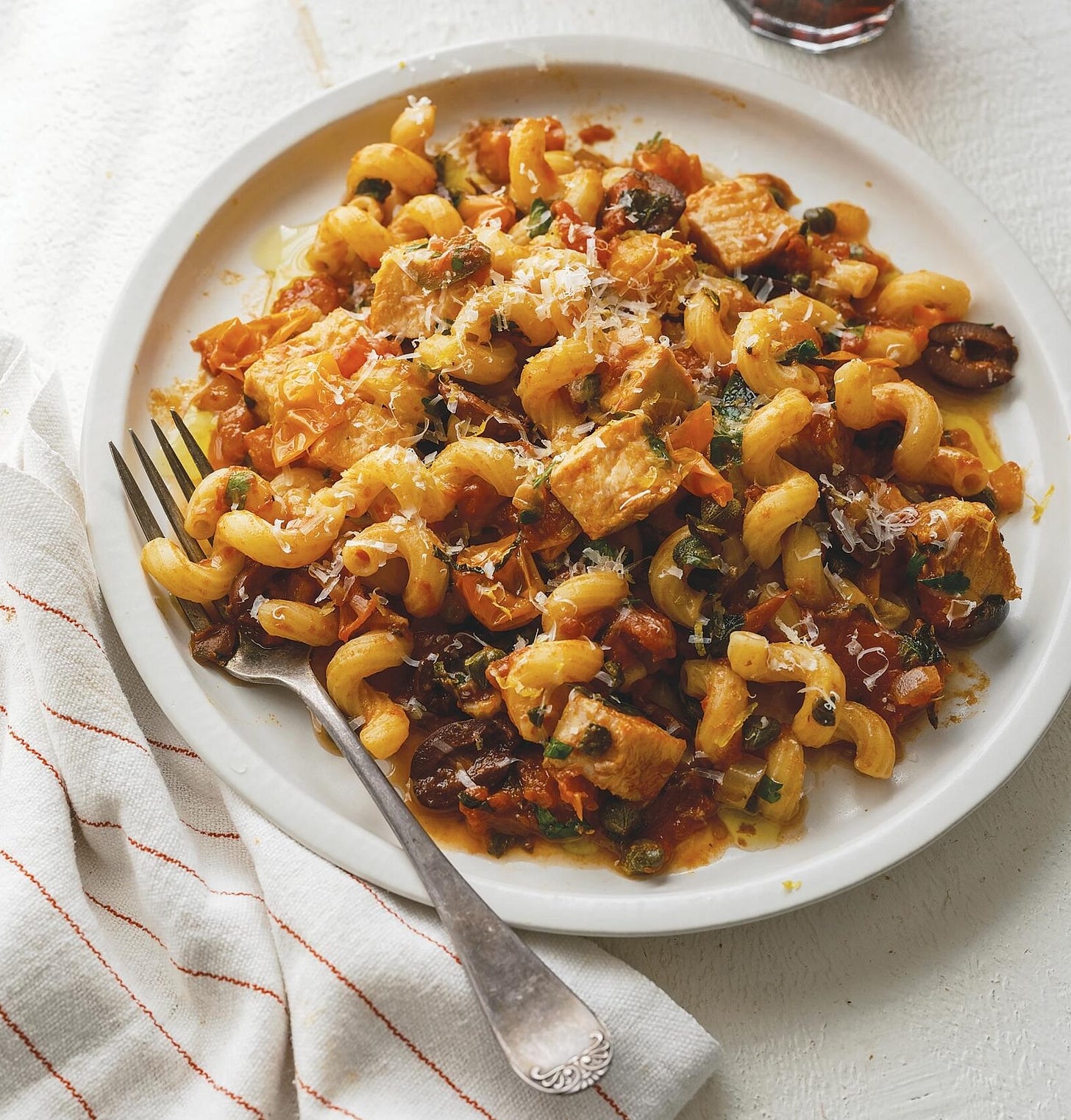Get Out of Your Fish Rut With Ari Kolender
Seafood tips and recipes from the acclaimed Los Angeles chef and cookbook author.
Even if we eat fish once or twice every week, a lot of us lean on the same sorts of fillets and cooking methods over and over.
Paging through chef Ari Kolender’s new book, How to Cook the Finest Things in the Sea, I was reminded of how much more variety we could have at the table.
On this week’s podcast episode, Ari—the chef behind Found Oysters and Queens Raw Bar & Grill in LA—shares some cooking methods he thinks are ideal for the seafood-hesitant, plus thoughts on the forgiving cuts of fish that’ll let you relax a little more in the kitchen.
He reveals the step he swears by for grilling skin-on fish without incident, and his rules for buying seafood that he’s going to serve raw.
The chef walks us through he thinks about pairing flavors, too.
When making crudo or other raw preparations, he stresses, simple is best: “What I typically try and do,” he says, “is think about balance, and the fat, the acid, the salt, and the texture of the fish, too. So, you know, if you have something that is a fattier fish, like a salmon or a yellowtail or fatty tuna, I’m going to think about the marinades and the flavors that I’m using a little bit differently than I would if I was using a rockfish or a halibut, something that is way more delicate and kind of just needs an easier flavor profile.”
He serves mellow kombu-cured halibut with crème fraîche and basil, while richer mackerel gets a lot of dill and a hit of fresh horseradish or wasabi. In these scallop tostadas, the slight sweetness of the bivalves pairs nicely with grated apple, mirin, and lime. Yum.
As long as the weather’s hot, I’m tempted to rotate between the book’s chapter on raw preparations and the one that focuses on tinned fish, but if you’re game for turning on the stove, I highly recommend Ari’s deeply savory puttanesca-ish swordfish pasta, which you’ll find in full below. Leftovers are totally delicious at room temperature the next day.
Win a copy of the book
If you want to freshen up your fish routine this summer and try a few new seafood dishes, you really need a copy of How to Cook the Finest Things in the Sea. And luckily, I have one to give away this week!
Here’s how to enter: Make sure you’re signed up as a paid subscriber to this newsletter by end of day Thursday, July 24, 2025.
Paid subscriptions make this newsletter and the podcast possible—and might even allow us to interview more cookbook authors per month later this year—so if you’re enjoying The Dinner Plan, now is a great time to throw in a few bucks.
Alternately, you can enter to win for free by sending along a fridge voice memo for us to play on the show. All the instructions are right here.
There’s nothing else you need to do to enter the giveaway. But I do appreciate your clicking on the ❤️ at the bottom of the page and leaving a little comment to help bring this newsletter to the attention of new readers.
While you’re at it, have you rated the podcast on Spotify or Apple or wherever you listen? Your stars can really help!
Giveaway winner will be alerted by Substack DM and email—be sure to check your messages! If there’s no answer from either within 48 hours, we will move on to another winner. U.S. addresses only, 18+. Giveaway not sponsored or administered by Substack. Ends July 24, 2025.
Ari mentioned:
Fish in Paper, Spring and Summer Editions (KCRW)
Fennel pollen (Spice House)
Sicilian Crudo (NBC Los Angeles)
Mackerel Tartare With Horseradish and Dill (LA Times)
Three Crabs Fish Sauce (Instacart here)
Tinned fish favorites (especially mussels in escabeche, razor clams, and tomato sardines): Island Creek (use code DINNER15 for 15% off!), José Gourmet, Donostia, La Brujula, Patagonia Provisions
Espelette Butter
Charlie Trotter’s Raw
Charlie Trotter’s Vegetables
Charlie Trotter’s Seafood
Charlie Trotter’s Meat & Game
Hugh Fearnley-Whittingstall’s River Cottage Fish (AbeBooks here)
Rowan Jacobsen’s The Essential Oyster (Bookshop here)
This newsletter contains affiliate links—your purchase helps keep the dinner ideas coming. Want more cookbook recs from expert guests? Here’s the all-time list.
A MESSAGE FROM OUR SPONSOR
Don’t leave Bernal Cutlery—San Francisco’s legendary shop for knives, tools, and Japanese kitchenware—without a jar of Yuzukararin.
This flavorful blend of bright yuzu, chili, and salt is crafted in Kochi’s Mihara Village, Japan’s renowned citrus region and brought into the US exclusively by Bernal Cutlery. Sprinkle it on raw fish, pizza, grilled meat, tofu, vegetables, even fruit or ice cream—anything that needs a lift.
Maggie mentioned:
Grilled fish collars (use yuzu in the ponzu instead of lemon/lime if you have it!)
From the ad break:
Island Creek Oysters: Use code DINNER15 for 15% off
Made In Cookware: Use code DINNERPLAN for 10% off full-price items
Swordfish Cavatappi with Cherry Tomatoes, Mint, and Fresh Chiles
Excerpted from How to Cook the Finest Things in the Sea by Ari Kolender (Artisan Books). Copyright © 2025.
This pasta salad is a riff on a puttanesca, served with seared swordfish fillets, lots of aromatics, fresh chiles, and fresh herbs. Since swordfish freezes well, it’s a great fish to keep in the freezer. You can even make the sauce and sear the swordfish in advance. After that, you can just open a bottle of wine and hang out until it’s time to boil pasta and throw it all together. Serve this dish at room temperature on a hot summer night, but because the leftovers keep really well, it’s great cold out of the fridge, too.
Note: Kalamata olives work well, too, or a mixture of Niçoise and Castelvetrano.
Serves 4 to 6
2 swordfish steaks (5 ounces/140 g each), about 2 inches (5 cm) thick
Kosher salt and coarsely ground black pepper
Espelette pepper
Smoked paprika
3 tablespoons plus ½ cup (120 ml) olive oil, plus more for drizzling
½ cup (70 g) small-diced yellow onion
½ cup (65 g) small-diced fennel
2 garlic cloves, thinly sliced
½ jalapeño, seeded and thinly sliced
6 oil-packed brown anchovy fillets
½ teaspoon crushed red pepper flakes
½ cup (120 ml) red wine (whatever you have on hand)
One 28-ounce (794 g) can crushed tomatoes
1 pound (450 g) cavatappi or strozzapreti pasta
¼ cup (40 g) drained capers
20 Niçoise olives (see Note), pitted and halved
2 cups (10 ounces/280 g) cherry tomatoes
¼ cup (60 ml) fresh lemon juice
¼ cup (8 g) tightly packed fresh mint leaves, roughly chopped
¼ cup (7 g) fresh parsley leaves, roughly chopped
2 tablespoons fresh oregano, roughly chopped
8 to 10 chives, cut into ½-inch (13 mm) matchsticks
Grated lemon zest, for garnish
Freshly grated Parmesan cheese, for serving
Liberally season the swordfish fillets with kosher salt, black pepper, Espelette, and smoked paprika.
Heat 3 tablespoons of the olive oil in a skillet over medium-high heat until just starting to smoke. Gently lay the swordfish fillets (away from you, to protect from splatter) into the pan and cook them to medium (118°F/48°C internal temperature), 2 to 3 minutes per side.
Transfer the swordfish to a plate to rest (you want to save those resting fish juices in the plate for later).
Heat the remaining ½ cup (120 ml) olive oil in a Dutch oven over medium heat until shimmering. Add the onion, fennel, garlic, jalapeño, anchovies, and pepper flakes. Season with salt and cook, stirring occasionally, until the onion is translucent, about 3 minutes. Add the red wine, increase the heat to medium-high, and bring to a bubble. Reduce the heat and simmer until the wine is reduced by half, about 2 minutes. Stir in the crushed tomatoes and a pinch of salt, reduce the heat to medium-low, partially cover (crushed tomatoes like to pop and sputter across your stove), and simmer for 10 minutes.
Bring a pot of nicely salted water to a boil. Add the pasta and cook to al dente according to the package directions.
Meanwhile, cut the rested swordfish into 1-inch (2.5 cm) pieces and return them to the plate with its juices.
After the sauce has simmered for 10 minutes, add the capers, olives, cherry tomatoes, and lemon juice and cook, stirring occasionally, while the pasta cooks. Taste for seasoning and add salt if needed.
Once the pasta is al dente, drain it and transfer to the Dutch oven with the sauce. Add the herbs, chives, and swordfish and its juices. Take the pot off the heat, stir it to combine, then cover it and allow the flavors to marry for about 2 minutes.
Season to taste with salt and then serve in pasta bowls, topped with lemon zest, Parmesan, and a drizzle of olive oil.






Wow I am not sure I’ve ever cooked swordfish at home. That is crazy. I can’t wait to try this.
Definitely trying the swordfish-but please tell Ari that the tomato sauce he wondered about is the fully cooked and ready to use kind, made from fresh tomatoes, that one would put on pasta! Plus after today I’ll have 10-12 more jars…
Love this podcast, Maggie!